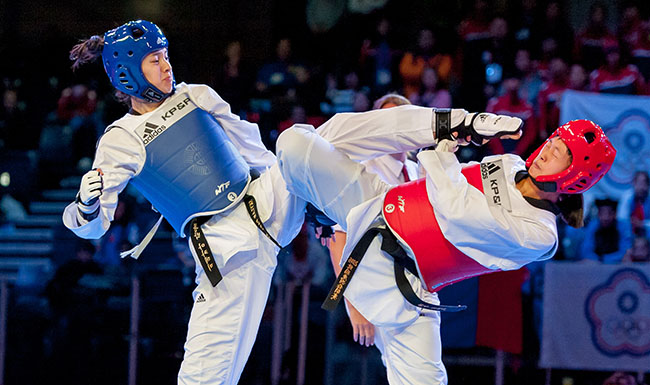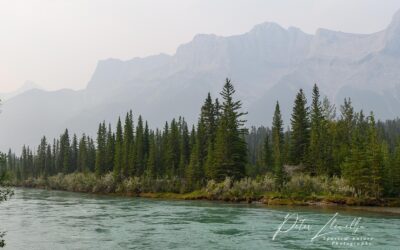Recently while covering the World Junior Taekwondo Championships I was approached by someone asking what my ‘camera settings’ were. I quickly rattled off what I was using “1/1250sec, f2.8. at 4000ISO set manually”. The gentleman replied I must be using old lenses as he did not need to set his ISO nearly this high as all his lenses had ‘stabilization’ so he could shoot at much lower settings and get higher quality pictures, 2-3 stops lower and still handhold “no problem at all” so he was only using 640 ISO.
Now, I am always happy to engage in discussions about photo technique and equipment, just not in the middle of an important competition where I am working, so told this person I needed to concentrate on what I was doing but would be happy to chat if I had the time after competition had finished. Unfortunately I never saw him again so was unable to point out the errors in his thinking.
First would have been – why was I choosing to use 4000 ISO. Of course, had I thought it prudent I would have loved to use a lower setting. The choice of 4000 ISO was to give me a shutter speed high enough to freeze the action when the athletes engaged in their fast kicking movements. This required a minimum shutter speed of 1/1000sec. If I had lowered my ISO to the same 640 that this person was using and assuming I still wanted to make a correct exposure at f2.8 (the maximum aperture of the lens I was using) my shutter speed would have dropped to around 1/250th sec – not nearly fast enough to freeze the action.
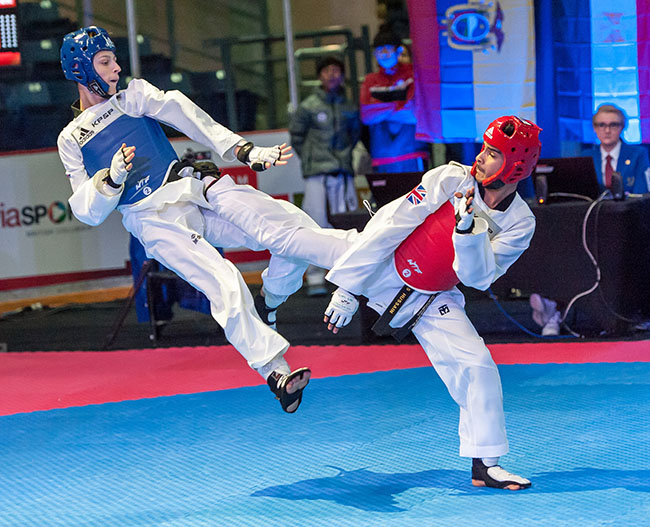
Burnaby, Canada. 16 November, 2016. WTF World Taekwondo Junior Championships, Alan Arcal Alcazar (ESP) in blue and Ilyas Hussain (GBR) in red compete in 48kg class.
Nikon D4s, AF-S 70-200 f2.8G ED VRII lens, 1/1000 @f2.8 6400ISO – This was on an outer mat where the light was even worse than the main mat hence 6400ISO
Now comes the misconception that I have heard many times since Nikon and Canon brought out their stabilized lenses – I can shoot at much lower shutter speeds and still freeze the image. NOT SO!! What VR (Nikon’s Vibration Reduction) and IS (Canon’s Image Stabilization) actually allow you to do is to avoid camera shake at slow shutter speeds – this has nothing to do with freezing the action.
If you need 1/1000th sec shutter speed to freeze the action and have no movement blur you need 1/1000 sec, period. No amount of vibration reduction or image stabilization will affect this in any way.
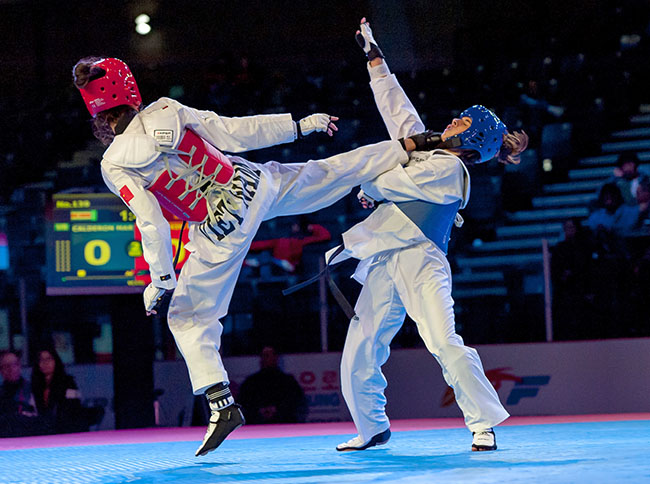
Burnaby, Canada. 16 November, 2016. WTF World Taekwondo Junior Championships, Maria Calderon (CRC) blue and Thi Kim Ngan Ho (VIE) red, compete in female 44kg class gold medal match. Ho took the gold medal
Nikon D4s, AF-S 70-200 f2.8G ED VRII lens, 1/1250 @f2.8 4000ISO
Finally I would have pointed out that using 4000ISO ( and higher) is well within the capabilities of my cameras and can produce image files that can be used easily up to a full poster output.
Shooting raw files and a bit of prudent noise reduction in Photoshop produces remarkably clean images, even in deep shadow areas.

Burnaby, Canada. 20 November, 2016. WTF World Taekwondo Junior Championships Georgii Tandelov (RUS) blue, and Aleksandr Keselj (GER) red compete in the male +78kg. final won by Tandelov.
Nikon D4s, AF-S 70-200 f2.8G ED VRII lens, 1/1250 @f2.8 4000ISO
By the way – pretty much every lens I own has VR, including the Nikon AF-S 70-200 f2.8G ED VRII lens I was using that day. And the VR was turned OFF. I find my images are actually sharper with it turned off when using fast shutter speeds. I only ever turn VR on if hand holding at slow shutter speeds (who said better to get a decent tripod?) or if I am working from a moving platform such as a boat, helicopter or vehicle.
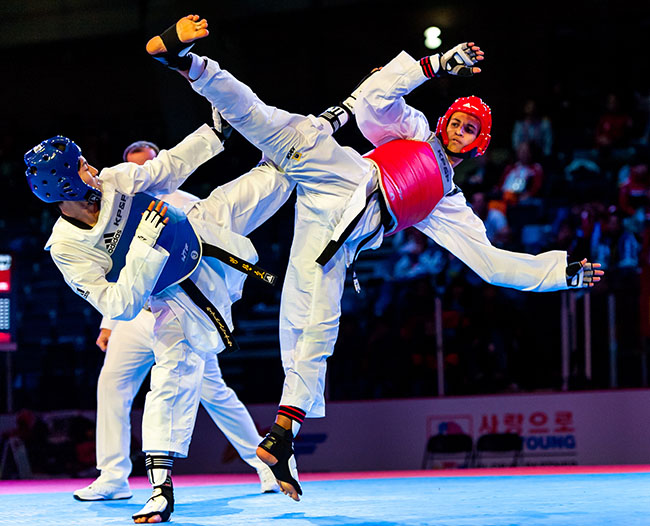
Burnaby, Canada. 17 November, 2016. WTF World Taekwondo Junior Championships, Chan-Ho Jung (KOR) blue and Houssam El Amrani (MAR) red, compete in the semi-final of male 55kg won by Jung
Nikon D4s, AF-S 70-200 f2.8G ED VRII lens, 1/1250 @f2.8 4000ISO

